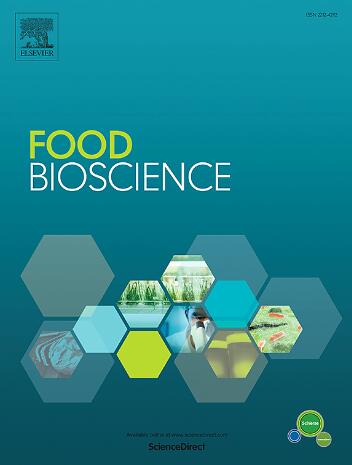Physicochemical properties and action mechanism of chicken lung protein hydrolysate modified by plastein reaction
IF 4.8
1区 农林科学
Q1 FOOD SCIENCE & TECHNOLOGY
引用次数: 0
Abstract
Plastein reaction is the process of colloid formed from concentrated hydrolysate by protease under suitable conditions, but the underlying mechanism has not been clarified. This study examined the functional and mechanistic changes in chicken lung protein hydrolysate (CLPH) caused by the plastein reaction. The results revealed that the plastein reaction products stretched, the hydrophobic groups were exposed, and the reaggregation occurred. In terms of function, solubility declined after modification, but foaming properties and emulsification properties increased. Moreover, the elevated Fe2+ chelation (from 18.20 % to 48.32 %), DPPH (30.04 %–71.74 %), ABTS (41.66 %–62.44 %) and hydroxyl radical (34.85 %–63.22 %) scavenging power suggested that the plastein strengthened the CLPH in a broader sense. Meanwhile, hydrogen bonds and hydrophobic interactions were crucial in creating the structure of the plastein modification products. In summary, the plastein reaction is a viable method for influencing structural changes to enhance protein function.

通过普拉斯丁反应改性的鸡肺蛋白水解物的理化性质和作用机理
本文章由计算机程序翻译,如有差异,请以英文原文为准。
求助全文
约1分钟内获得全文
求助全文
来源期刊

Food Bioscience
Biochemistry, Genetics and Molecular Biology-Biochemistry
CiteScore
6.40
自引率
5.80%
发文量
671
审稿时长
27 days
期刊介绍:
Food Bioscience is a peer-reviewed journal that aims to provide a forum for recent developments in the field of bio-related food research. The journal focuses on both fundamental and applied research worldwide, with special attention to ethnic and cultural aspects of food bioresearch.
 求助内容:
求助内容: 应助结果提醒方式:
应助结果提醒方式:


